The Academy of Strings believes wholeheartedly in the Suzuki Method and uses its truths and principles as the core of its musical curriculum and method.
The Suzuki Method, often referred to as “talent education,” has proven itself as the premiere method of music instruction throughout the world.
This method employs a three-phase approach that includes individual lessons, group lessons, and recitals. A positive learning environment is created through the involvement of enthusiastic parents and listening to recordings of concert artists to deepen one’s understanding and enjoyment of the language of music.
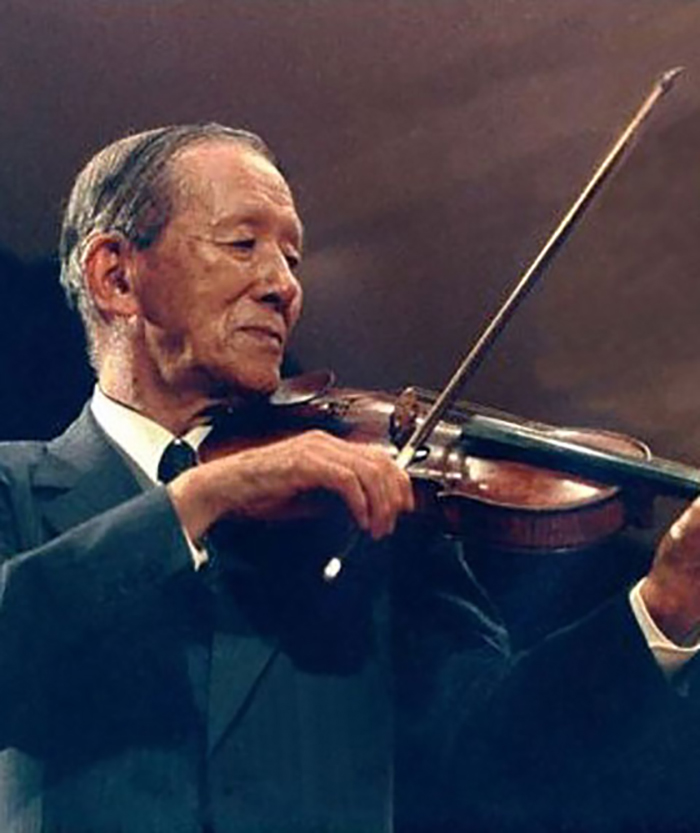
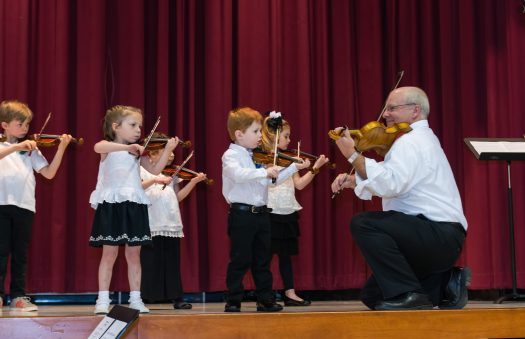
The Academy of Strings uses a “full immersion mastery” approach, requiring a commitment from both students and parents.
This approach requires dedication and discipline on the part of the family, in a commitment to scheduling time for daily practice sessions and creating a quality learning environment. As a result, its rewards extend far beyond the wonderful sense of musical accomplishment to include an amazing journey through the Suzuki experience that goes beyond words. Many share our belief that this is one of the greatest benefits of “talent education” — the life lessons learned from what it takes to truly master a string instrument last a lifetime.
Support the Academy with a tax-free gift
THE SUZUKI METHOD
The Suzuki Method: In The Beginning
 Dr. Shinichi Suzuki (1898-1998) studied violin in Japan for many years before going to Berlin, Germany in the 1920’s. Berlin at that time was one of the centers of classical music in the world. After further study there, he returned to Japan to play and teach. He taught university students, but he became more and more interested in the education of young children. He was very interested in creating young musicians versus repairing older music students.
Dr. Shinichi Suzuki (1898-1998) studied violin in Japan for many years before going to Berlin, Germany in the 1920’s. Berlin at that time was one of the centers of classical music in the world. After further study there, he returned to Japan to play and teach. He taught university students, but he became more and more interested in the education of young children. He was very interested in creating young musicians versus repairing older music students.
Dr. Suzuki realized the implications of the obvious fact that children of all nationalities easily learn their native language.
He began to develop a method for teaching violin, modeled after the way in which children learn language, called the Mother-Tongue Approach, or Talent Education.
The Suzuki Method: Enriching Children's Lives Through Music
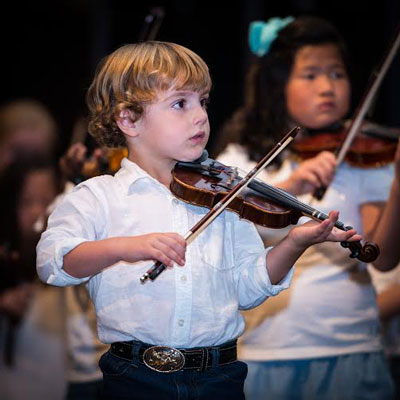 Creating professional musicians is not a primary goal of the Suzuki Method or the Academy of Strings. Dr. Suzuki believed that with the proper environment and educational process, sensitivity and understanding might be raised in children and youth through music, creating a better life for them and ultimately, the world. Preferring the name “Talent Education” rather than Suzuki Method, Dr. Suzuki based his educational system on the premise that talent is not inborn or inherited but rather “Man is the son of his environment.”
Creating professional musicians is not a primary goal of the Suzuki Method or the Academy of Strings. Dr. Suzuki believed that with the proper environment and educational process, sensitivity and understanding might be raised in children and youth through music, creating a better life for them and ultimately, the world. Preferring the name “Talent Education” rather than Suzuki Method, Dr. Suzuki based his educational system on the premise that talent is not inborn or inherited but rather “Man is the son of his environment.”
Talent Education not only provides the student with an enriching musical experience but also creates an atmosphere of sharing and a mutual learning experience for both the parent and student to experience together. Suzuki believed that the potential of every student can be highly developed if he is given the proper training and learning environment.
The Suzuki Method: Starting Early
 Talent Education usually begins at an early age. Dr. Suzuki suggests that parents play classical music for their children from birth, with formal music instruction beginning a few years later. Suzuki Method instruction combines the three elements of listening, practicing, and performing, with the student, parent and teacher working closely together. At the Academy, the triangle of the student, parent and teacher continues to collaborate through all playing levels, from “Twinkle, Twinkle Little Star” through Mozart violin concertos.
Talent Education usually begins at an early age. Dr. Suzuki suggests that parents play classical music for their children from birth, with formal music instruction beginning a few years later. Suzuki Method instruction combines the three elements of listening, practicing, and performing, with the student, parent and teacher working closely together. At the Academy, the triangle of the student, parent and teacher continues to collaborate through all playing levels, from “Twinkle, Twinkle Little Star” through Mozart violin concertos.
The Suzuki parent attends all lessons and practices with the students each day as the “home teacher.”
As the student advances and matures, and has several volumes of music memorized and mastered, the role of the parent can evolve into that of a “parent coach.” The “magical pull” of the Suzuki Method is the parent’s involvement and the fact that students never outgrow the need, want, and desire to please a parent. This also creates a wonderful opportunity for parents to keep the communication lines open in an incredible and worthwhile project during the all impressionable and challenging teenage years. The parent encourages the student, praising each effort, ensuring a positive practice and learning environment.
The Suzuki Method: Listening and Observing
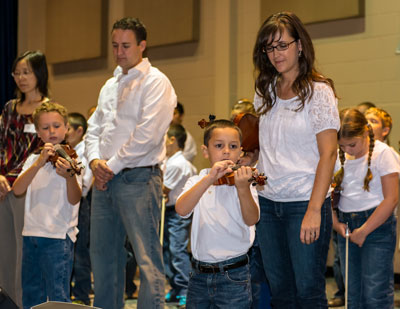 At the Academy, students and parents are encouraged to listen to their reference recordings daily and observe the lessons of others as often as possible. Just as very young children learn to speak in an environment filled with language, parents create a musical environment in the home. This is accomplished by playing recordings of the Suzuki repertoire and other music, in addition to attending concerts, which enables the students to absorb the language of music.
At the Academy, students and parents are encouraged to listen to their reference recordings daily and observe the lessons of others as often as possible. Just as very young children learn to speak in an environment filled with language, parents create a musical environment in the home. This is accomplished by playing recordings of the Suzuki repertoire and other music, in addition to attending concerts, which enables the students to absorb the language of music.
Young children can begin playing simple pieces before they are taught to read music. Suzuki teachers develop the student’s ear and ability to discern proper pitch and tone. Once these skills, level of technique, and playing ability are mastered, note reading is introduced in an “age and level sensitive” manner determined by the teacher. Students are encouraged to observe (come early and stay late) the lessons of others.
It has been proven that students (and parents) learn faster and understand better when they see others learning similar material. All levels of lessons are beneficial to observe regardless of a students’ current level. Observation of other lessons will develop a greater sense of understanding. A general atmosphere of generosity and cooperation is established, especially in group lesson settings, as students and parents are encouraged to support the efforts of other students and their parents.
The Suzuki Method: Memorization
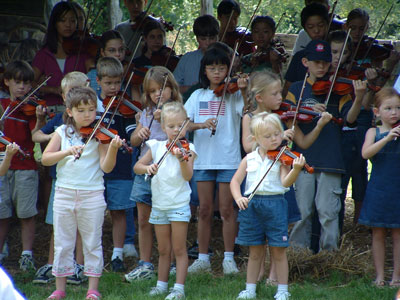 All pieces in the Suzuki repertoire are memorized. Repeated and consistent listening enables students to transfer the music from the ear to the fingers quickly. Only after a piece is memorized can a teacher begin to focus on teaching technique and musicianship.
All pieces in the Suzuki repertoire are memorized. Repeated and consistent listening enables students to transfer the music from the ear to the fingers quickly. Only after a piece is memorized can a teacher begin to focus on teaching technique and musicianship.

